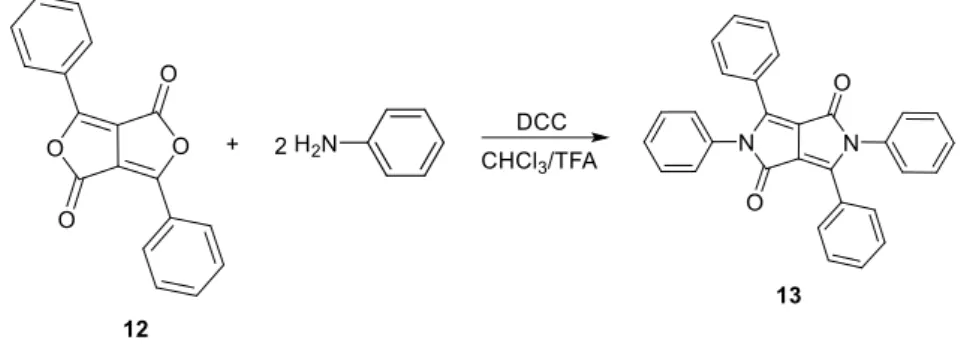Diketopyrrolopyrroles for dye-sensitized solar cells
Texto
Imagem




Documentos relacionados
The mixture was extracted with dichloromethane, the combined organic layers were washed with brine, dried over MgSO 4 , filtered and concentrated to yield the pure product..
After cooling down to room temperature, the white solid was filtered off and the solvent was removed by rotatory evaporation. The resulting mixture was refluxed while
The solid obtained after cooling was filtered, washed with cold ethanol and crystallized from acetic acid to give 18 as yellow crystals, yield 80%, mp > 300 ºC.. M.;
water (25 mL) was added the respective secondary amine (6 mmol) at the presence or absence of acetic acid (0.1 mL) and the mixture was stirred at room temperature until the
After the reaction completes, the reaction mixture brought to room temperature where the solvent used were extracted from the reaction medium and the product was isolated from
After completion of the reaction, which was monitored by TLC, the solid product was collected by iltration, washed with water and aqueous ethanol and puriied
The reddish orange solution was poured onto crushed ice and the precipitate so formed was filtered off, washed several times with water, air dried and crystallized from ethanol to
After the complete reaction, the mixture was brought to room temperature and was directly filtered through silica gel, using hexane/ethyl acetate (7:3) as solvent and the





